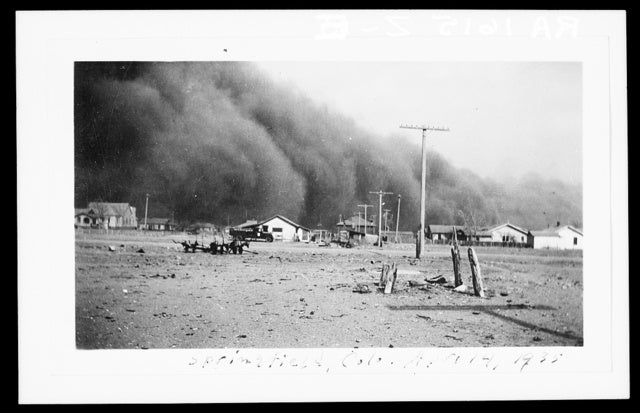During the Dust Bowl era in the 1930s, severe drought and poor farming practices led to massive dust storms across the Great Plains of the United States, causing ecological and agricultural devastation. One of the critical measures taken to mitigate the effects of the Dust Bowl was the planting of shelterbelts in the Midwest.
Shelterbelts are rows of trees and shrubs planted along the edges of fields to reduce wind erosion and improve soil conservation. Here's how they helped to stop the Dust Bowl:
- Windbreaks: Shelterbelts acted as windbreaks, reducing the force of wind gusts that could pick up loose soil and cause dust storms. By breaking the wind's force, shelterbelts prevented the erosion of fertile topsoil, which was a major problem during the Dust Bowl.
- Soil stabilization: The roots of trees and shrubs in shelterbelts helped anchor the soil. This stabilization was crucial because loose, dry soil was easily lifted by the wind, contributing to the dust storms. By holding the soil in place, shelterbelts prevented the blowing away of topsoil and allowed vegetation to grow.
- Moisture retention: Shelterbelts also helped to retain moisture in the soil. During periods of drought, maintaining soil moisture was essential for sustaining vegetation and preventing soil from becoming dry and easily eroded by wind.
- Microclimate improvement: The presence of shelterbelts created a more favorable microclimate within their vicinity. They reduced wind speeds, created shade, and altered temperature gradients. These changes helped create more favorable conditions for both crops and natural vegetation, contributing to ecosystem recovery.
- Long-term impact: While shelterbelts alone did not completely solve the underlying causes of the Dust Bowl, they played a significant role in mitigating its immediate effects. Over time, as agricultural practices improved and soil conservation methods were further developed, the combination of shelterbelts and other measures contributed to the recovery of the affected regions.
In summary, the planting of shelterbelts in the Midwest during the Dust Bowl era helped to stop the environmental degradation by reducing wind erosion, stabilizing soil, retaining moisture, and creating more favorable microclimates for vegetation. This initiative remains a notable example of how ecological restoration efforts can mitigate the impacts of environmental disasters.
